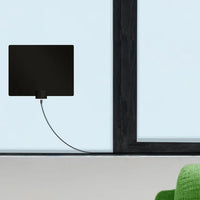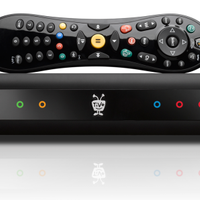Let's talk about your HDTV setup. If you're wondering whether you need any extra HD equipment for your HDTV antenna, you're not alone. Many people have this question, especially as the line between old-school antennas and modern streaming seems a little blurry. So, let's clear things up.
What is HDTV?
HDTV stands for high-definition television. It's a leap forward from the old standard definition TV you might remember. HDTV offers a crisper, clearer picture with better sound quality. The colors are more vibrant, the lines sharper, and the viewing experience overall is just much better. HDTV also allows for a wider aspect ratio, typically 16:9, compared to the 4:3 ratio of standard definition TV.
This means you can see more of the picture without it being distorted or cropped.
One of the key features of HDTV is its increased resolution. Standard definition TV has a resolution of 480p, while HDTV can have resolutions of 720p, 1080i, or 1080p. This means more pixels on the screen, resulting in a sharper and more detailed image.
Another advantage of HDTV is its digital signal, which helps eliminate interference and static that can occur with analog signals. This ensures a more consistent and reliable viewing experience.
In addition to the improved picture quality, HDTV also offers better sound quality with digital audio capabilities. This allows for surround sound systems and Dolby Digital audio, creating a more immersive viewing experience.
The Evolution of TV Viewing
The transition to HDTV was a significant shift in how we watch TV. From bulky CRT TVs with fuzzy images to sleek flat-screens that offer cinematic experiences right in your living room, it's been a wild ride. HDTV provides a more immersive viewing experience, with visuals that rival movie theaters. The clarity and sharpness of HD resolution make everything from sports games to nature documentaries seem more vivid and lifelike. And with the advent of smart TVs, we can now access streaming services and online content right from our living room, without needing a separate device.
HDTV has also changed the way TV shows and movies are produced, with directors now able to create content specifically designed for the higher resolution and wider aspect ratio. This has opened up new creative possibilities, leading to visually stunning productions that were not possible with older TV technology.
What is an HDTV Antenna?
An HDTV antenna is a special kind of antenna that captures high-definition signals from local broadcast stations. These signals are then sent directly to your TV, giving you free access to channels like ABC, CBS, NBC, and FOX, among others, without the need for a cable or satellite subscription. HDTV antennas come in various shapes and sizes, but they all work in a similar way. They receive digital signals over the airwaves, allowing you to access crystal-clear picture quality and sound without the need for a paid subscription service.
One of the main benefits of using an HDTV antenna is that it allows you to access local channels that may not be available on cable or satellite. This can be especially useful for news and sports broadcasts, as well as special events like live awards shows or concerts.
HDTV antennas are relatively easy to set up and install, and once you have one in place, you can enjoy free access to a wide range of channels without having to worry about monthly bills or contracts. They are also a great option for people who live in rural areas or those who want to cut back on their monthly expenses.
How Does an HDTV Antenna Work?
HDTV antennas work by picking up over-the-air (OTA) signals that broadcast networks transmit. These signals are digital, which allows for high-definition quality. When you connect the antenna to your TV, it converts these signals into watchable content, giving you HD channels without a monthly bill. HDTV antennas typically have a range of about 30-70 miles, depending on the model and location. They can be placed indoors, outdoors, or in your attic, as long as they have a clear line of sight to the broadcast towers.
To set up an HDTV antenna, you simply connect it to your TV using a coaxial cable and then scan for channels using your TV's menu. You may need to adjust the antenna's position to get the best reception, especially if you're trying to pick up signals from multiple directions.
HDTV antennas allow you to access local channels for free, including major networks like ABC, NBC, CBS, FOX, and PBS. This means you can watch popular shows, sports events, news, and more without a cable or satellite subscription.
Do I Need HD Equipment for HDTV Antenna?
The good news? You don't need any extra HD equipment for your HDTV antenna to work. Your modern TV should already have the necessary tuner built-in to receive digital signals. However, there are a few nuances you should know. First, make sure your TV has a built-in ATSC tuner, which is the type of tuner needed to receive digital over-the-air signals. Most TVs sold after 2009 should have this type of tuner, but it's always a good idea to double-check.
Second, if your TV is older and does not have a built-in ATSC tuner, you may need to purchase a separate digital converter box to connect your HDTV antenna to your TV. These converter boxes are relatively inexpensive and can be found at most electronics stores.
Lastly, it's important to properly position your HDTV antenna to receive the best signal. This may involve experimenting with different locations and orientations to find the optimal placement for your specific area and the channels you want to receive.
HD-Ready vs. HD-Compatible
If your TV is relatively new (let's say within the last 10 years), it should be HD-compatible or HD-ready. That means it can handle the high-definition signals from your antenna without any extra equipment. Just plug in the antenna, scan for channels, and you should be good to go. If your TV is older than 10 years, it may not be HD-compatible. In that case, you may need to purchase an external digital converter box to receive HD signals from your antenna. These boxes are relatively inexpensive and easy to set up.
Keep in mind that even if your TV is HD-compatible, the quality of your antenna and its placement can still impact the picture quality you receive. Make sure to use a high-quality antenna and position it in a place where it can receive a strong signal.
Types of HDTV Antennas
Now, there are a couple of different types of HDTV antennas to consider:
- Indoor Antennas: Perfect for those who live in urban areas where signals are strong. They're small and easy to install, usually right next to your TV.
- Outdoor Antennas: Better suited for rural or suburban areas where signals might be weaker. These antennas can be mounted on your roof or in your backyard to catch stronger signals.
Installation Tips for HDTV Antennas
Let's talk about getting the best performance from your HDTV antenna.
Location and Placement
Where you place your antenna can make a world of difference. The higher up and closer to a window, the better your reception will be. For outdoor antennas, aiming it toward the broadcast towers in your area will give you the best signal.
Connecting the Antenna
Connecting your HDTV antenna to your TV is usually as simple as plugging it in and running a channel scan. Make sure your TV's input is set to 'antenna' or 'air' and follow the on-screen instructions for scanning.
Additional Tips for Enhancing HDTV Reception
Want even better HDTV reception? Here are a couple more tips to keep in mind.
Positioning for the Best Signal
You may need to play around with your antenna's position a bit. Sometimes a slight adjustment can mean the difference between a crystal-clear channel and a fuzzy one. Move it around until you find the sweet spot.
Use a Signal Amplifier
If you find that your signal isn't strong enough, a signal amplifier can boost the reception. These devices are particularly helpful for those in areas with weaker broadcast signals.
Conclusion
So, in a nutshell, you don't need any fancy HD equipment to use an HDTV antenna. Most modern TVs are equipped to handle digital HD signals right out of the box. That said, be sure to place your antenna correctly and consider additional tips to optimize your HDTV viewing experience. Happy watching!
FAQs
- How do I know if my TV is compatible with an HDTV antenna?
- Check your TV's specifications or user manual to see if it has a digital tuner built-in. Most newer TVs do.
- Can I use an indoor antenna if I live far from broadcast towers?
- You can try, but outdoor antennas typically work better for long distances. An indoor antenna might not pick up signals as well.
- How do I find out where broadcast towers are in my area?
- There are websites and apps that can help you locate broadcast towers near you. Enter your zip code, and they’ll show you the best direction to point your antenna.
- Can I use a signal amplifier with an indoor antenna?
- Yes, you can! If your indoor antenna isn’t providing a strong enough signal, a signal amplifier might help.
- What should I do if I can’t get a clear signal with my HDTV antenna?
- Try repositioning the antenna, checking your cable connections, and scanning for channels again. If you still have issues, a signal amplifier might be necessary.






